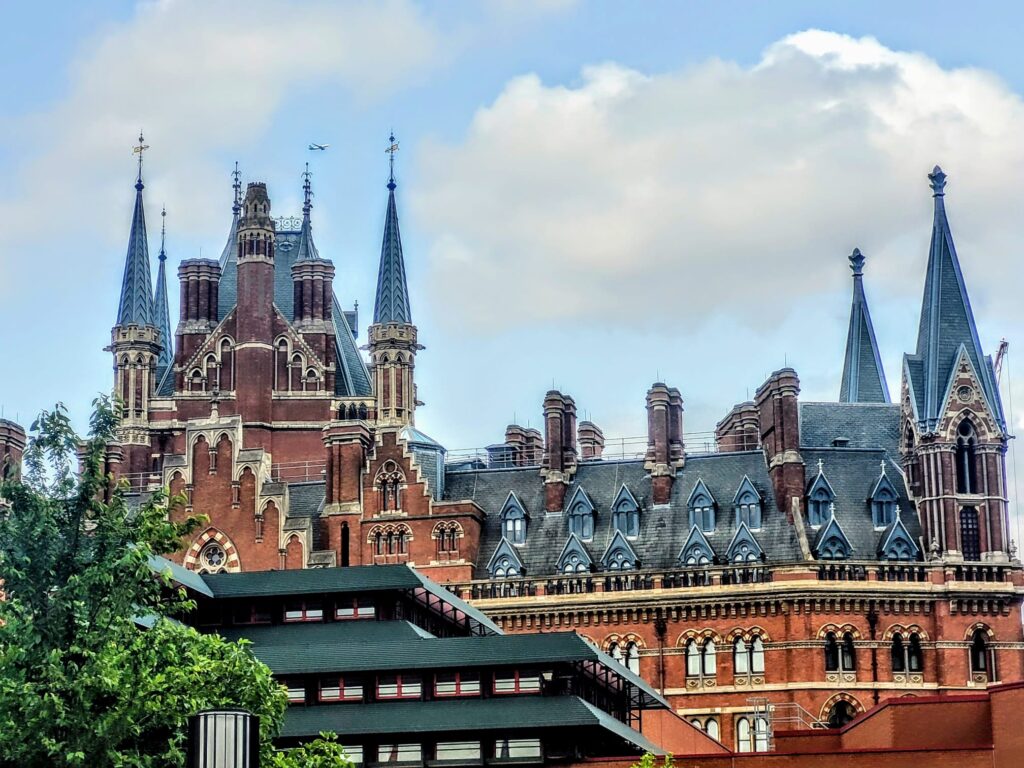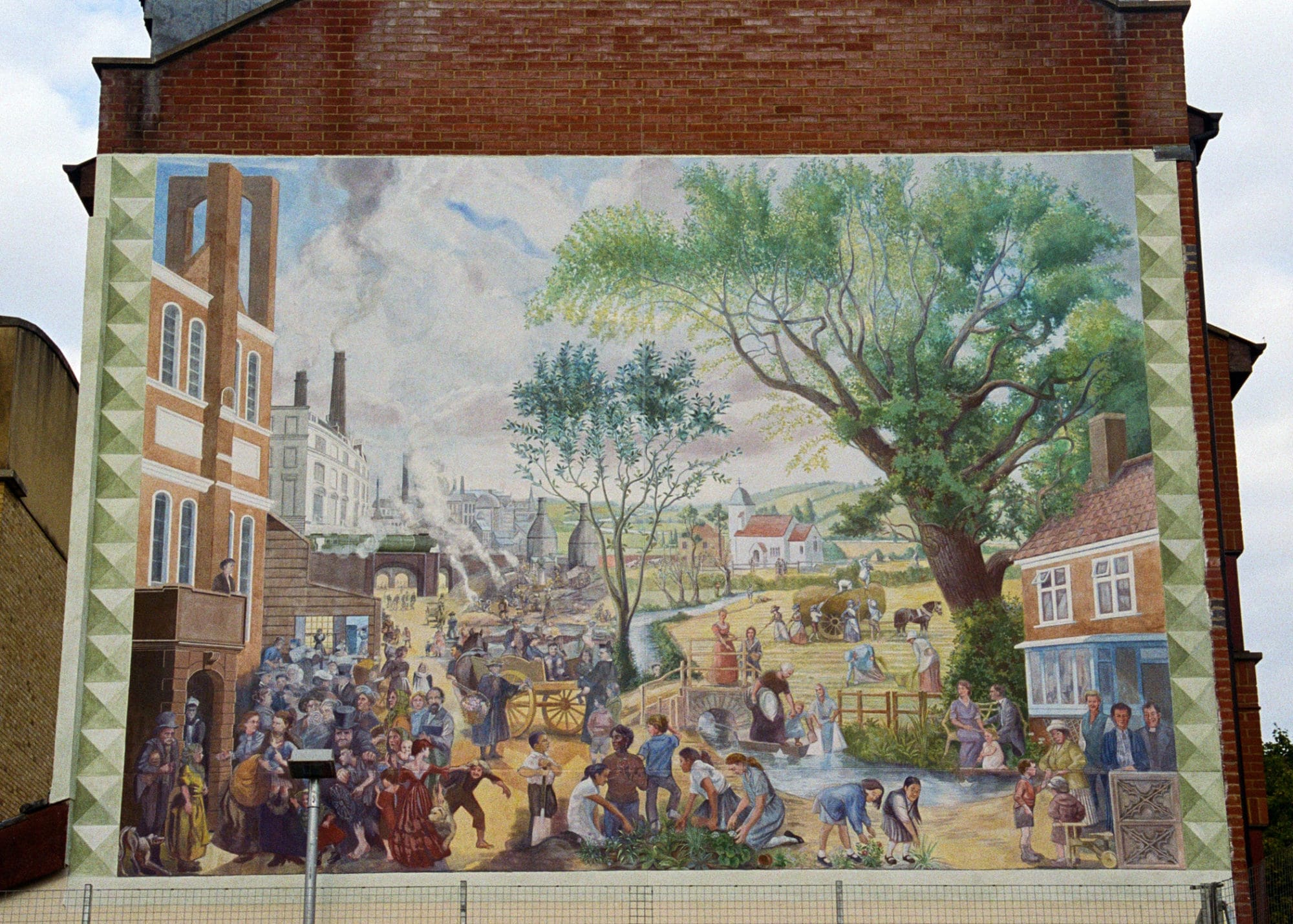Welcome to Somers Town
Discover the Unsung Heart of the City

Nestled quietly between Euston, St Pancras, and King’s Cross—three of London’s busiest railway hubs—you’ll find Somers Town. It’s a place bursting with character, stories, and a spirit that is all its own. Whether you’re new to London or a lifelong local, Somers Town is easy to miss and even easier to fall in love with.
Where It All Began
Picture this: It’s the late 18th century. London is expanding. The air is filled with the energy of change. Somers Town gets its name from Charles Cocks, 1st Baron Somers, whose family owned the land. Back then, this area was little more than open fields and marshy stretches. But Londoners needed homes, and Somers Town was ready to welcome them.
- 1700s: The area was mainly rural, dotted with farms and the odd country house.
- 1780s: The first wave of development began, with elegant Georgian terraces springing up.
- Early 1800s: The arrival of new residents—French refugees escaping revolution and war—gave the district a new European flavour.
Refuge and Revolution
Somers Town soon transformed into a haven for those seeking shelter and new beginnings. French aristocrats, Catholic priests, and impoverished migrants filled the new terraced homes. Their stories still echo in the neighbourhood’s atmosphere—a charming French café here, a street name there.
The Railway Changes Everything
By the mid-19th century, the railway era had dawned. Euston, St Pancras, and King’s Cross stations emerged, ushering in trains, workers, noise, and significant transformation. Many grand homes were demolished to make way for new housing built for railway families and workers.
- Fun fact: The area’s warren of streets was home to artists, inventors, and future politicians.
Victorian Life & Social Change
Somers Town became famous for its lively markets, street vendors, and vibrant working-class community. Streets like Chalton and Ossulston thrived with activity and energy. However, beneath the surface, overcrowding and poverty were rampant. Reformers and social advocates, including Mary Wollstonecraft, an early champion of women’s rights, worked tirelessly to improve living conditions.
- The Polygon—an unusual, round-edged building that once stood at the heart of Somers Town, home to poets and reformers alike.
- Brill Place—famous for its vibrant Saturday market in days gone by.
20th Century: War and Renewal
Somers Town was a trailblazer in social housing. The Ossulston Estate, completed in the 1930s, established a new benchmark for urban living.
This area has always been known for its vibrant community spirit—neighbours supporting one another, each with a story to tell and a smile to share.
- Somers Town was a pioneer in social housing. The Ossulston Estate, completed in the 1930s, set a new standard for city living.
- The area has long been celebrated for its strong sense of community—neighbours helping neighbours, always with a story or a smile to share.
Modern Somers Town: Hidden Gems & Local Life
Times have changed, yet the vibrant spirit of Somers Town continues to thrive. Today, it is a lively, multicultural neighbourhood brimming with independent shops, inviting cafés, creative art projects, and charming pocket parks.
Don’t miss:
- The British Library—just a stone’s throw away, and perfect for a coffee and a wander among rare books.
- The Francis Crick Institute—where scientists are unlocking the secrets of life itself.
- Local street art showcases the area’s rich history and diverse culture.
Somers Town Legends
Every neighbourhood needs its stories. Somers Town has plenty:
- Mary Wollstonecraft: Early women’s rights advocate who lived and worked here.
- Beryl Bainbridge: The acclaimed novelist called this area home.

Charles Dickens: and his vivid tales drew inspiration from the alleys and characters of Somers Town.
Why Visit Somers Town?
If you’re seeking an authentic slice of London—warm, inviting, and delightfully quirky—Somers Town is the place to be. Stroll through its streets, pop into a cosy café, or strike up a conversation with a friendly local. Here, stories and smiles await you at every turn.
- Local Events: Street festivals, art shows, and community gatherings pop up throughout the year.
- The People’s Museum https://programme.openhouse.org.uk/listings/10952 ) in Phoenix Street is a wonderful mix of fascinating, homely and quirky. They are a vital and friendly hub where the local community meets up for a chat and a coffee. Events are held regularly and are well worth attending.
- Easy Connections: Just steps from King’s Cross, St Pancras, and Euston stations.

